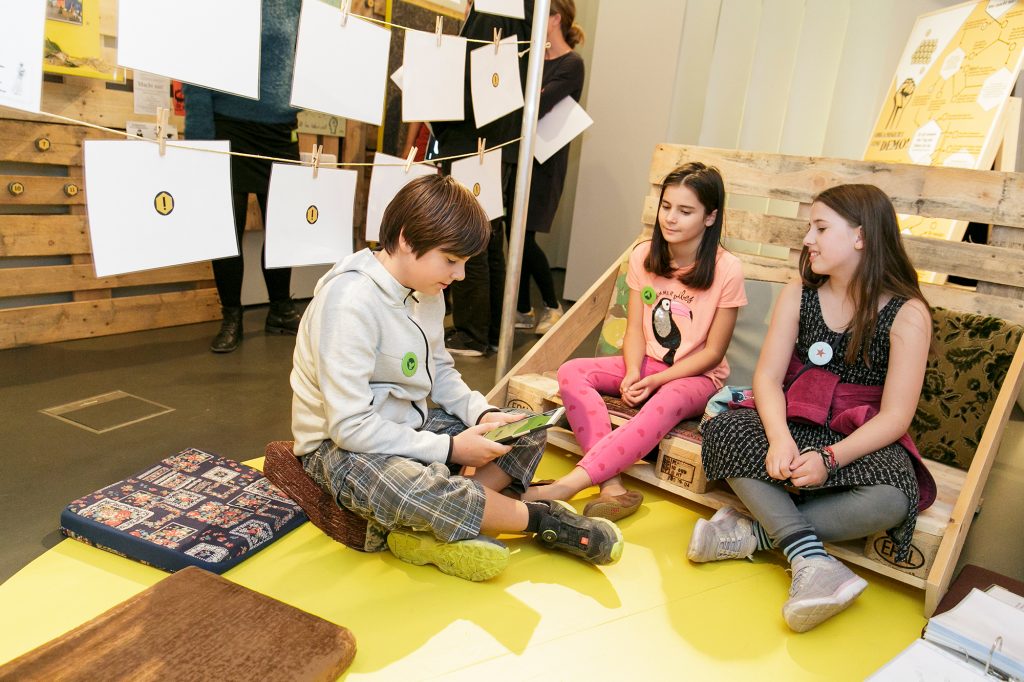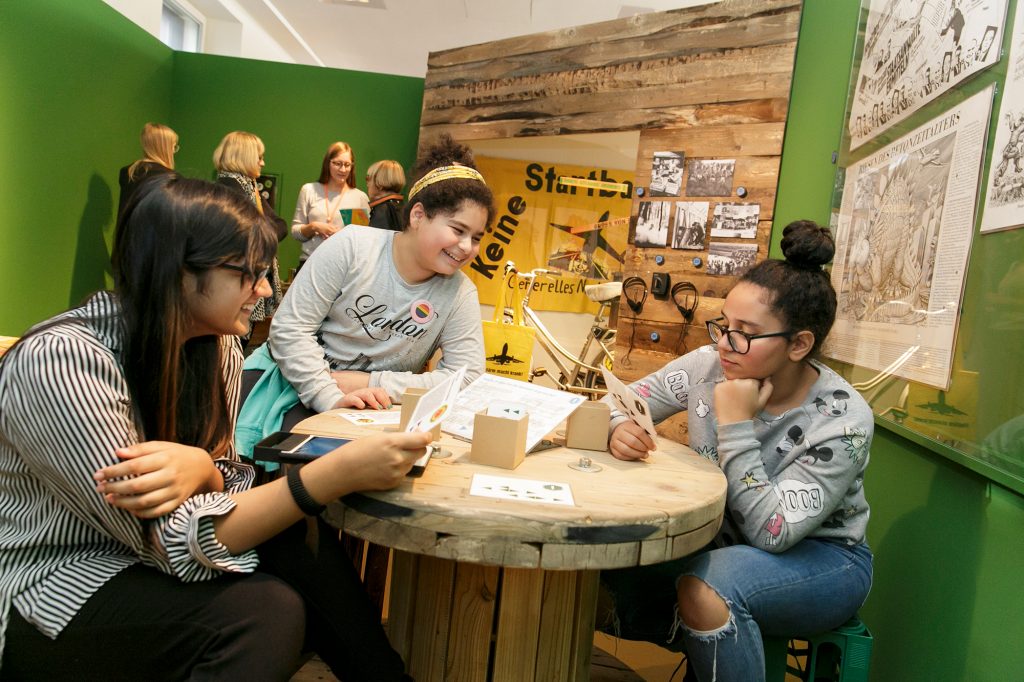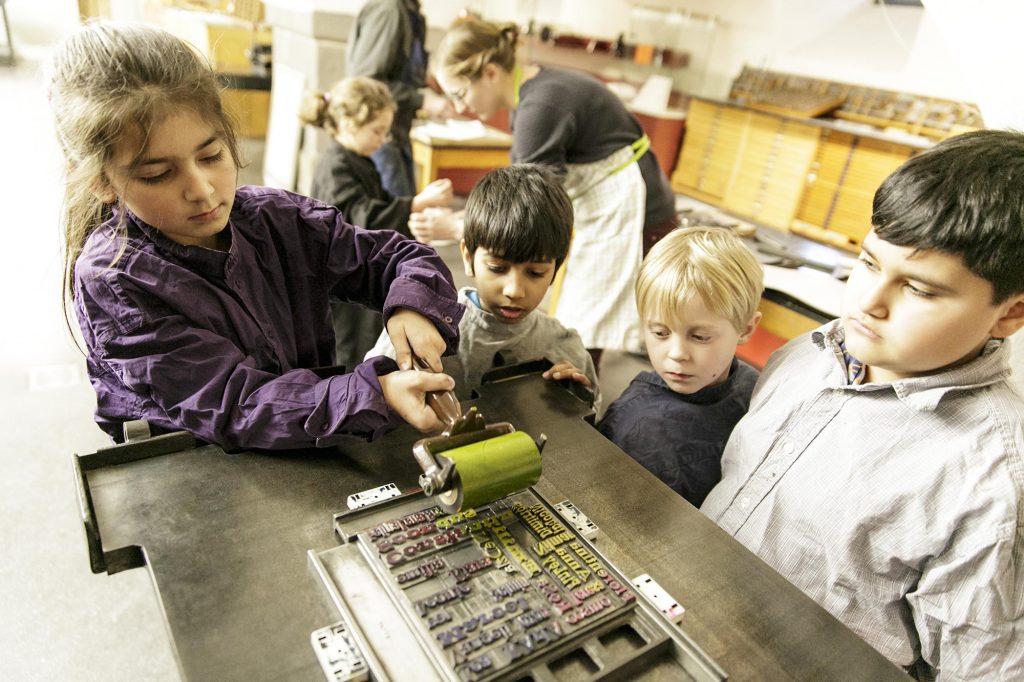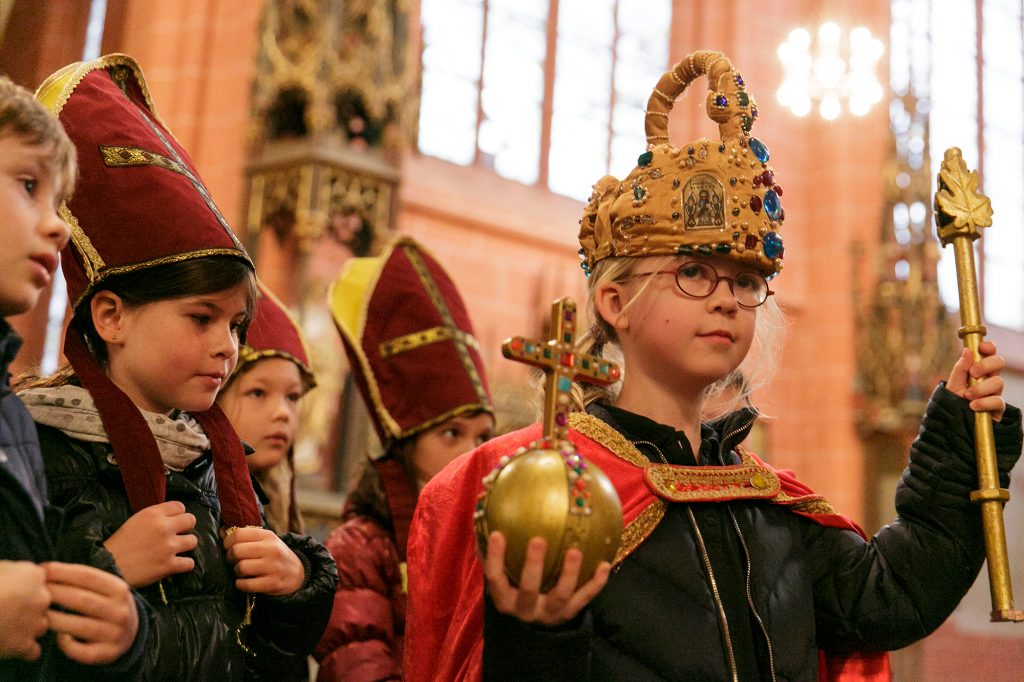
Dive into the Museum! Susanne Gesser on museums and exhibitions for children
18 September 2024
Susanne Gesser heads the Junges Museum Frankfurt (the “Young Museum” was formerly called the Kindermuseum Frankfurt). She is a member of the advisory board of the DHM children’s exhibition “Dive into the Picture! Time Travel for Kids”. In the interview she talks about her experience with how museums can become good places for children.

For more than 50 years the children’s museum in Frankfurt am Main has functioned as a model and forerunner. Since 1972 it has prepared exhibitions for children. What is the special aspect of your children’s museum?
Susanne Gesser: The Junges Museum Frankfurt has been a very special place for more than five decades. It is a cultural place explicitly for children, young people, and their families. The exhibitions of the children’s museum developed into independent formats in the 1970s. They differed from the usual museum exhibitions both formally and as to their contents. An innovation, for example, was that they took account of the physical size of the kids in presenting the objects. Some of the objects could even be played with. In the staged exhibitions the active participation of the visitors was required to understand what they were about and to experience them and make them come alive. Only by thinking and acting along with them was it possible to understand them. This gave birth to the format of the interactive exhibition. Groups of children were invited to actively participate in the planning and design of the exhibition. From that time on, self-initiative, participation, learning though self-discovery and creativity became the core of the exhibition concepts.

“History – young people – museum” is the triad that has occupied you as director and curator at the Junges Museum Frankfurt for quite some time now. What tip can you give the DHM for its first children’s and family exhibition “Dive into the Picture! Time Travel for Kids” and for the prospect of a special exhibition area for children in the new Permanent Exhibition?
Susanne Gesser: The most important thing is to find and realise topics that are relevant for children today. Where are the points of reference that interest children and young people, the things that have to do with the reality of their lives and their range of experience? Since as a rule they are interested in everything, curious and eager to explore and learn, there are very many topics that are suitable for a child-oriented exhibition.
In the choice of topic and exhibition concept one should attach great importance to plurality and multidimensionality. But the concurrence of contradictions in processes and actions should also be evident and stressed by setting up different stations in the exhibition. In this way visitors can learn that a single (their own) viewpoint is only one aspect and that the same process can be perceived from a different standpoint. It is important to present the contents in a logical context so that the children’s prior knowledge is activated. The activation of their own experience and adventures is crucial for taking in, combining and implementing the previous knowledge with the new. Alongside the relevance to their lives, the children’s and young people’s own activity plays an important role in mediation work.

Why is history relevant to children and when does history become an important topic for children?
Susanne Gesser: The questions: What has that got to with me, what does this event have to do with me today? guide us in our work. The Junges Museum is a place where the history of the city and a bit of the world is explained. Here kids can get to know their cultural legacy and explore Frankfurt beyond their own neighbourhood. With our didactic work we encourage our young public to fit themselves and their own history and family history as a child of Frankfurt – no matter whether they were born here or not – into a larger relation and at the same time to feel situated here. To put it briefly: to develop a consciousness of their own roots. In this way, the bond with the city in which they live – which is so important for children and young people – is strengthened, and they are encouraged in the long run to act independently and to participate in society.

You have gathered a lot of experience and experimented on how to offer children multifaceted creative spaces and participation on an equal footing – and at the same time you are working with very real events in history with the aid of historical objects. How do you succeed in keeping a balance?
Susanne Gesser: An important catchword is activity orientation. Our didactic collection of historical objects allows us to integrate the originals as hands-on objects into the mediation work. The playful approach and the appeal to different senses are guaranteed through reference to the objects and the inclusion of original objects. Our visitors can literally take things into their own hands, touch them, “grasp” and “capture” their meaning. Touching, participating and undertaking their own activity evoke empathy and imagination.
Our current children’s exhibition is an interim step, an experimental field, as it were, where we want to find out what methods and contents we should develop for the children’s area in the new Permanent Exhibition. What do you think is important so that an exhibition for children remains relevant and lively over a longer period of time?
Susanne Gesser: It is a mixture of different aspects that can contribute to a successful exhibition. Alongside activity orientation, a playful approach and the appeal to different senses, depending on the topic, there is definitely the integration of original objects, because this creates a further level of “taking the target group seriously”. Particularly important is the personal communication by trained staff members who act believably with heart and mind and address the young visitors in a way appropriate to their age. Further guarantees of success are opportunities for the children to design their own things and be creative in the exhibition itself. Particularly attractive – which inspires them to return to the exhibition – is when the results of their own activity are presented in the exhibition and can be seen as a contribution to the exhibition.
Susanne GesserSusanne Gesser has worked at the Junges Museum Frankfurt (formerly Kindermuseum Frankfurt) as a curator since 1992 and has headed the museum since 1998. She is also the head of the department of Mediation and Participation at the Historisches Museum Frankfurt. Gesser is a founding member of the German Federal Association of Museum Pedagogy and the Federal Association of German Children’s and Youth Museums (board member 1997–2000 and 2015–2017). She is Vice President of Hands On! International Association of Children in Museums. She is also currently the provisional director of the Historisches Museum Frankfurt. |